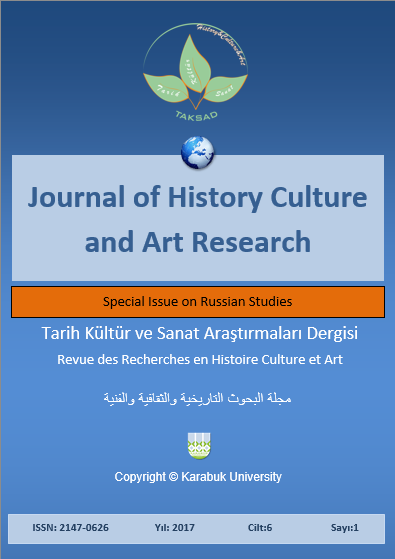Features of Speech Reactions to Mental State Concepts
DOI:
https://doi.org/10.7596/taksad.v6i5.1239Keywords:
Associative representation, Mental state, Associative experiment, Speech reaction.Abstract
The article is devoted to the problem of mental state associative speech representation. The study involved 31 Russian-speaking subjects (27 females and 4 males) at the age of 18 - 22 years old. The experimental procedure using DMDX program allowed to measure the time of speech response to stimuli - the concepts of 25 mental states. The average reaction time to the concepts of mental states, shown on the computer monitor, made 2114.68 milliseconds. The most rapid associative speech response was the response to the following stimuli: "ecstasy" (1452.54 msec), "meditation" (1569.26 msec), "tranquility" (1685.21 msec), the slowest response is the response to "interest" (2517.5 msec) and "indecision" (2454.63 msec). In total, 448 associations were given to the concepts of 25 mental states by tested subjects - speech reactions, i.e. 17.9 associations per mental state on the average. The greatest number of speech associations (24) was given to the concept of love. The smallest number was given to the concept of ecstasy (11 associations). Associative fields of mental states (meditation, ecstasy, melancholy, tiredness, loneliness) have the most pronounced core. The prospects of the study consist in the performance of a similar associative experiment among the representatives of another culture, as well as in the studying of an estimated and situational associative representation of mental states.
References
Abramov, V. P. (2001). The theory of the associative field. Lexicology, phraseology and the lexicography of Russian language. Moscow: MSU, 2001. pp. 124-125.
Alekseeva, E. M. (2015a). Mental representation of mental states: explicit and implicit associative components. Scientific notes of Kazan University. Humanities series, 157 (4), 147-156.
Alekseeva, E. M. (2015b). Possibilities of implicit associative relations study in the context of the "situation - mental state" relationship. Psychology of mental states, (pp. 19-23). Kazan: Publishing House of Kazan University.
Alekseeva, E. M. (2016). Representation of a mental state: the phenomenological aspect. Bulletin of the Pskov State University. Series: psychological and pedagogical sciences, 4, 82-88.
Dorfman, L. Ya. (1997). Emotions in art: theoretical approaches and empirical studies. Moscow: Sense.
Forster, K. I. & Forster, J. C. (2003). DMDX: A Windows display program with millisecond accuracy. Behavior Research Methods, Instruments, and Computers, 35(1), 116-124.
Gorodetskaya, L. A. (2002). Associative experiment in communicative research. In I. N. Rosina (ed.), Theory of communication and applied communication, (pp. 28-37). Rostov on Don: IUBiP.
Goroshko, E. I. (2001). Integrative model of a free associative experiment. Kharkov: Ra-Caravel.
Mädebach, A.; Alekseeva, E. & Jescheniak, J. D. (2011). Word order does not constrain phonological activation in single word production. Journal of Cognitive Psychology, 23(7), 837-842.
Martinovich, G. A. (1990). Types of verbal links and relationships in the associative field. Issues of psychology, 2, 143-146.
Morozova, I. A. (2001). Associative experiment as the method of cognitive research. Methodological problems of cognitive linguistics, (pp. 126-129). Voronezh: Publishing House of VSU.
Pautova, L. A. (2007). Associative experiment: the experience of sociological application. Sociology: methodology, methods, mathematical models, 24, 149-168.
Protopapas, A. (2007). CheckVocal: A program to facilitate checking the accuracy and response time of vocal responses from DMDX. Behavior Research Methods, 39, 859-862.
Prusakova, O. A. & Sergienko, E. A. (2002). Representations of emotions by children from three to six years. In A.V. Karpov (ed.), Scientific search, 3, (pp. 51-64) Yaroslavl: Yaroslavl State University.
Downloads
Published
How to Cite
Issue
Section
License
All papers licensed under Creative Commons 4.0 CC-BY.- Share — copy and redistribute the material in any medium or format
- Adapt — remix, transform, and build upon the material for any purpose, even commercially.
Under the following terms:
Attribution — You must give appropriate credit, provide a link to the license, and indicate if changes were made. You may do so in any reasonable manner, but not in any way that suggests the licensor endorses you or your use.
- No additional restrictions — You may not apply legal terms or technological measures that legally restrict others from doing anything the license permits.







